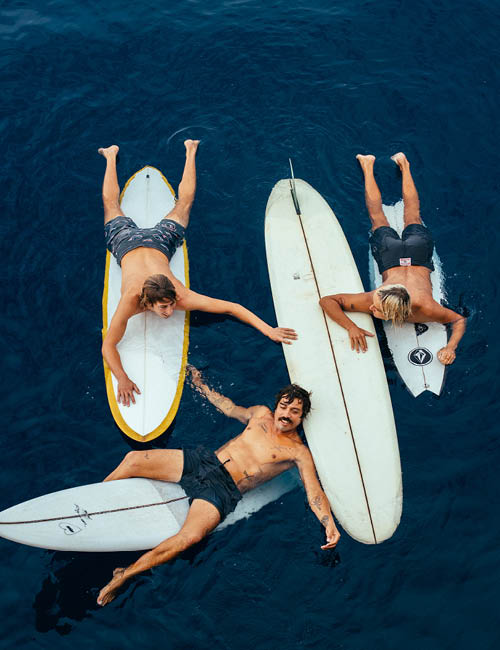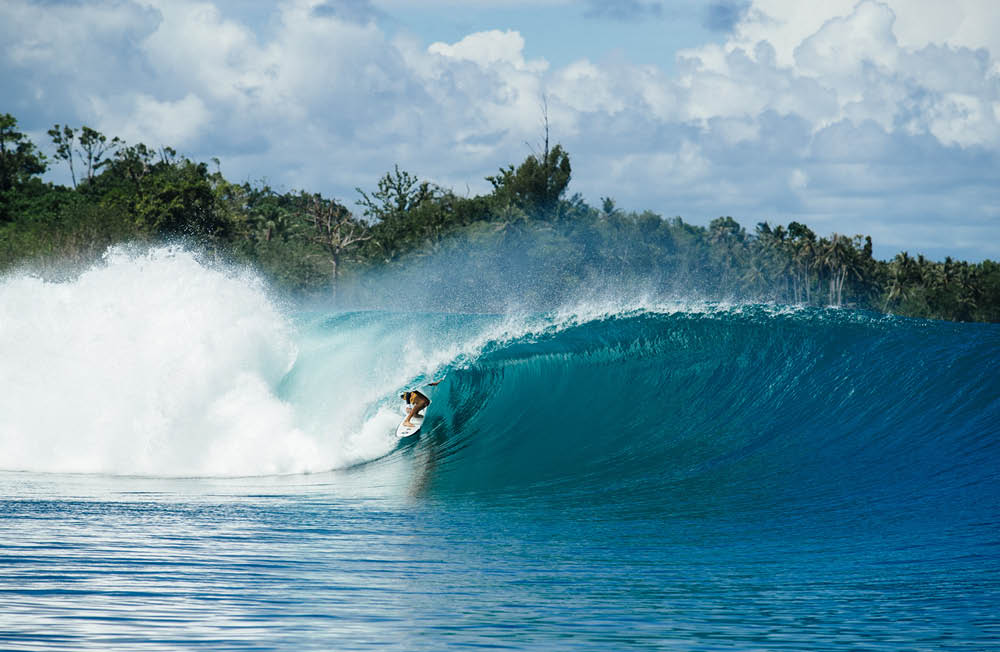We Talk Shaping Experiments With Ryan Burch
Share
What happens when six freewheeling minds of Electric Kool Aid Acid Test proportions dump the bus in San Fran and dip their blotters, bobbers and sinkers into the Ments lysergic? The result will be a film by artisan Thomas Campbell, starring Craig Anderson, Alex Knost, Bryce Young, Ozzie Wright, Jared Mell and today’s subject of interest Ryan Burch, with whom we took the opportunity to ask about his shaping experimentation in our new magazine…
You always seem to be riding left-field surfcraft. What was in your boardbag for this trip?
I brought a 5’3” fish, a 5’5” flex-tail twin fin, a 6’2” twin-fin step up, a 5’10” winged-swallowtail twin, a 9’9” noserider and a mid-length. But my favorite board was a 5’9” asymmetrical pickle-forked twin fin.
What’s the benefit of a pickle-forked nose?
It compliments my asymmetrical boards, which are really narrow – 18 inches wide – and don’t have a lot of curve in the outline. So the nose helps extend the straightness of the rail line. Lately I’ve been doing split-tail boards that have twin fins and a pickle-fork nose. The width in the nose creates balance, but the cut-away between the points in the nose helps when you get them in the air on late drops.
Asymms may look odd, but riding them actually feels pretty intuitive, right?
Yea, totally. It’s just a subtle improvement to a shortboard, really. People say they don’t feel that different because they’re able to engage their rails and turn just like you’d turn a thruster. The things that hinder asymmetrical boards are the same things that hinder thrusters, like a screw up in the rocker or the volume flow or the concave. Asymms are just much more custom, combining all the best design elements without feeling obligated to make it symmetrical.
What has it been like testing these designs and figuring out just what kinds of waves they work in?
When I learned how to shape, I started making boards that made the waves around San Diego more interesting. Once I started exploring asymmetrical boards and fishes, I decided I wanted to test them in more challenging, barrelling waves. So the boards have kind of evolved over multiple trips and going to places like G-Land where I could ride a lot of perfectly-groomed, overhead, down-the-line waves. You’re able to pump them and get them going really fast down the line.

Do you think something like the Shortboard Revolution will ever happen again, where boards undergo a complete transformation?
I don’t think there will ever be another time when everyone just flip-flops like that, because there are so many surfers now who ride so many different boards in so many different waves. Back then, everyone was riding longboards and trying to surf similar waves. But I do think there’s something going on with foil boards. Look at how many people are jumping on those in a variety of different waves.
Do you think everyone should have an asymmetrical board in their quiver?
Totally. If every ’CT surfer who goes to J-Bay for the contest was really dialled in on asymms, they’d probably be ripping even harder than they already are.
About a decade ago, there seemed to be- an unspoken rule that ‘real surfing’ was done on a thruster and anything else was a lesser form of wave riding. Do you think that mindset has changed completely?
Yeah, I remember that. It’s changing, but there are definitely still a lot of traditional shortboarders out there. In some places that mindset has totally changed, but I think in Indo and other spots, people still act surprised when they see different types of boards.
Do you think the fact that you grew up riding high-performance shortboards has influenced the way you make these alternative shapes?
For sure. Most of my boards have a performance-y twist to them. Even with my mid-lengths, I always put edges in them. I add side cuts to some of my fish so that they draw lines that are more similar to a shortboard’s. And my asymms are more futuristic than they are anything else. I just focus on refinement, really. That’s the only thing that’s really left to do in surfboard design. Instead of just copying something else, you might as well try to make boards better.
